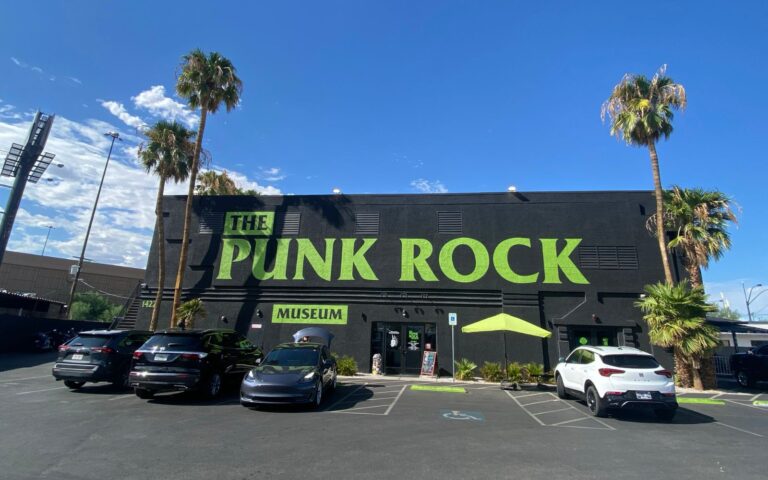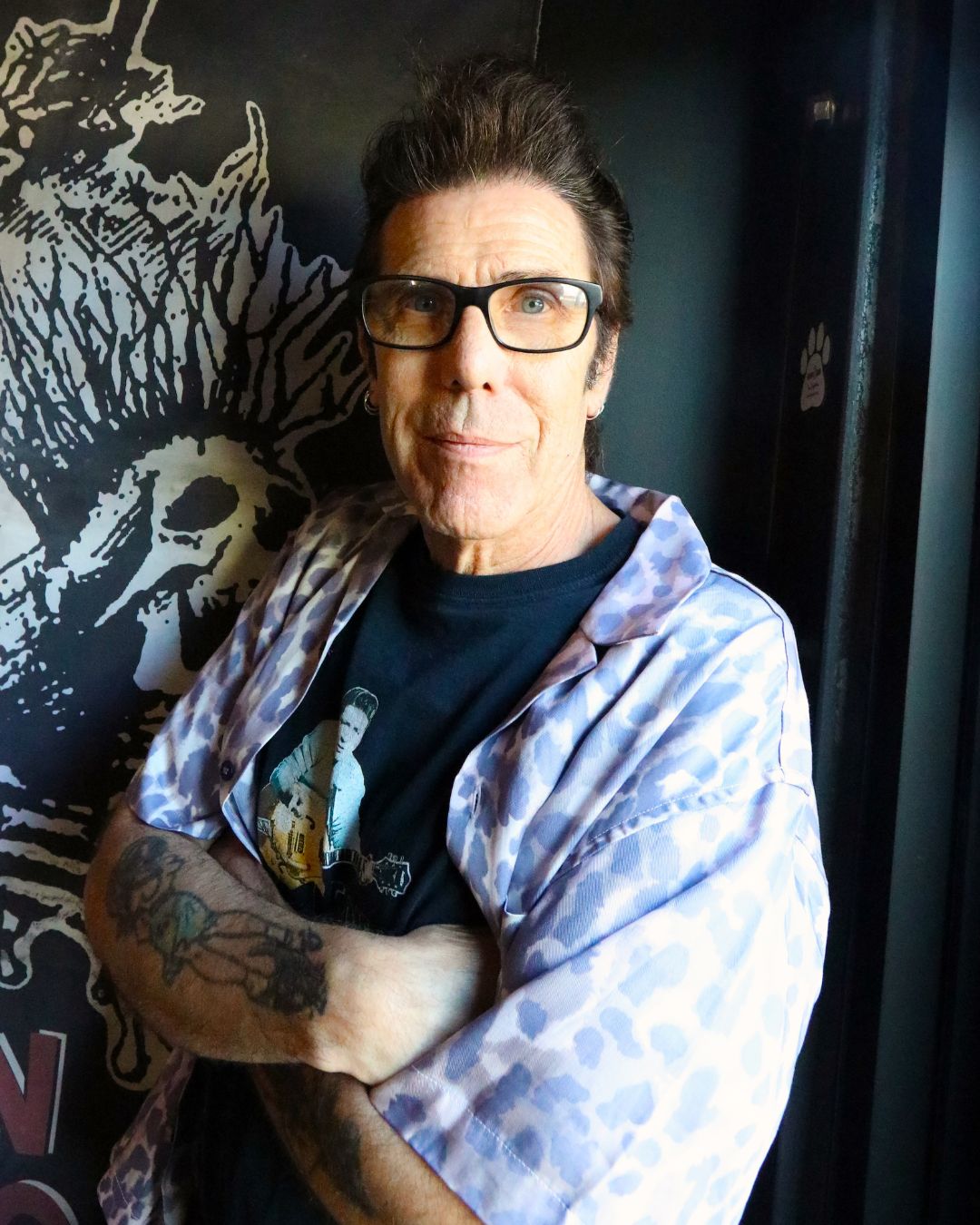By Megan Magdalena
A sold-out night at the Vogue Theatre brought Warped Tour memories roaring back.

Off the Strip, away from the hub of hotels, casinos, and shopping plazas glistening by day and glowing by night, the Punk Rock Museum is located a stone’s throw from the Arts District of Las Vegas, where a different breed of culture is cropping up in the Nevada desert.The 18-block area containing theatre row, artist-run galleries, street markets, carnivals, festivals, vintage shops, boutique hotels, and fun bars and restaurants, along with other oddity attractions like the Burlesque Hall of Fame and the bona fide creepzone that is Zak Bagans’ Haunted Museum means 18b, as it is otherwise known, is clearly marked as the flipside of Vegas.
It’s the weekend going into Labour Day, U.S.A. Slim Jim Phantom, the Stray Cats’s rowdy rockabilly drummer who famously played the kit standing up, drove in from L.A. to be the celeb tour guide at the Punk Rock Museum for this particular week. In a gated parking lot off I-15, the museum is a two-story slab of concrete painted industrial black with PUNK ROCK in six-foot high lime green letters screaming over the entrance way.
Just past the lobby and t-shirt shop, Jim stands beneath a stretch of photos, posters and memorabilia from New York’s notorious glory days. He points to one display piece after another, talking about their significance and his own personal recollections. As one of the original instigators, Slim Jim recalls CBGB’s derelict stage, one which launched some of the world’s most famous and infamous bands. He jokes that Dee Dee Ramone was a one-of-a-kind character 24/7, and that he and Johnny Ramone were good pals.
“We talked baseball all the time. Nuts for the New York Yankees. Big fans!”

James McDonnell aka Slim Jim Phantom is an American musician, best known as the drummer for the band Stray Cats.
From Long Island, just outside Manhattan, the Stray Cats ventured to CBGB’s to take their stab. But bands were limited to one show a month, which didn’t work for vocalist Brian Setzer and the crew, who hightailed it back to Long Island playing clubs six nights a week and racking up a 100-song set list. They set out for London in 1980, ready to rock that town.
Slim Jim wanders over to the next display area, where a circular green decal stuck to the grey cement floor reads “Anarchy in the U.K. 1970s United Kingdom.” He stands in front of a huge wallpaper photo of David Vanian, lead singer of the Damned, in full vampire regalia — black cape, black boots with dangerous points, his face painted ghost white. In the display case, original artwork and live shots of the Clash, the Damned, the Sex Pistols, the Vibrators, and Generation X line the wall with unwashed t-shirts once worn by various band members.
Jim knows that circle well: the Stray Cats were in the middle of it after landing in London. He says one of the biggest thrills of being a Stray Cat is when they were once courted by the Rolling Stones to be on their record label.

“There was a big buzz in London, and a lot of faces were coming to see us. The Stones came and the next day it’s in the national newspaper,” he says. “You know, on the front cover was Princess Di opening a hospital, and a picture of the Stray Cats with the Rolling Stones on the same page. Yeah, three guys from Long Island in a national newspaper in England was kind of a cool thing.”
But signing with the Stones’ label proved to be elusive, making the Stray Cats a bit uneasy. They needed to record by Christmas to get their music in rotation for the following year, which was coming fast. Dave Edmunds, the fiery Welsh guitarist well known for his love of rockabilly, was keen to lock the band down in the studio, and he did. In 1981, the Stray Cats released their debut album that saw three singles chart in the U.K. that year.
The rest, as they say, is history. The Punk Rock Museum offers a rare glimpse into this raucous chapter of music history, where Slim Jim Phantom and countless other legends made their mark. Here, fans can walk the gritty timeline of punk, from the dive bars of New York and the anarchic streets of London to the underground scenes that sprang up across the globe. It’s a space that celebrates rebellion, DIY culture, and the raw, unfiltered spirit that fueled a movement.
As Slim Jim wraps up his tour, a grin on his face, you can almost hear the echoes of those frantic, sweaty nights when punk rock was more than just music — it was a way of life. In a city built on spectacle, the Punk Rock Museum stands as a monument to authenticity, a reminder that the loudest voices are often the ones who refuse to play by the rules.

By Megan Magdalena
A sold-out night at the Vogue Theatre brought Warped Tour memories roaring back.
By Stephan Boissonneault
With There Is Nothing In The Dark That Isn’t There In The Light, the veteran vocalist leans into intimate, searching folk.
By Sam Hendriks
A refined turn toward clarity reveals Melody Prochet at her most grounded and assured.